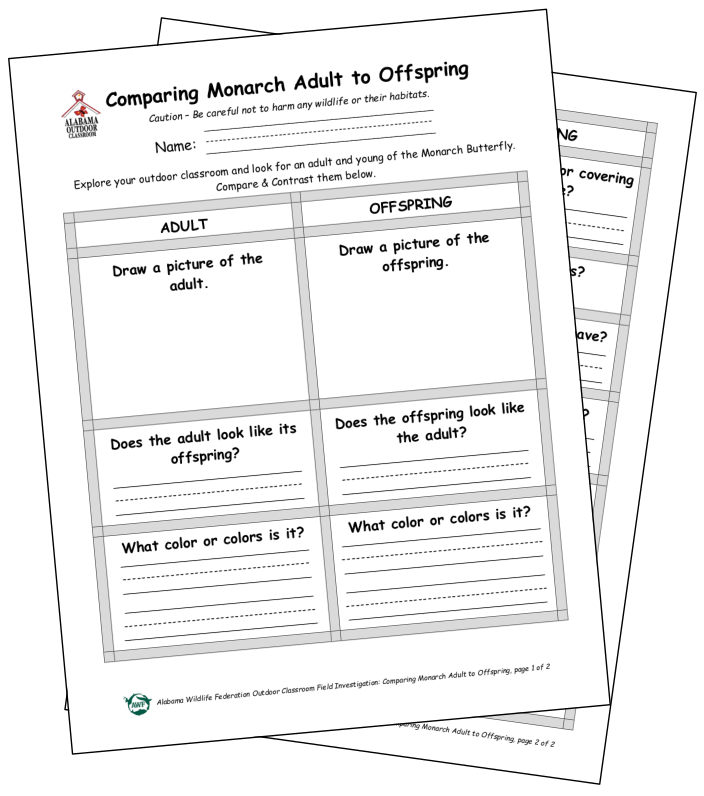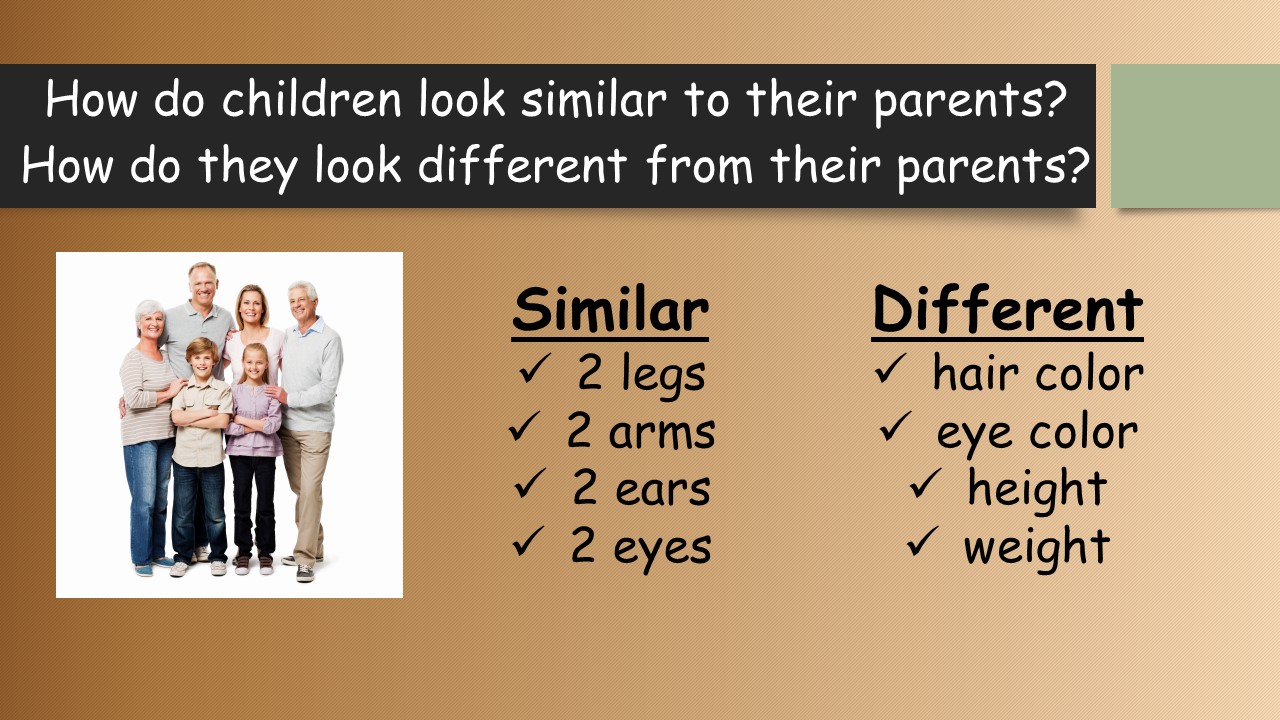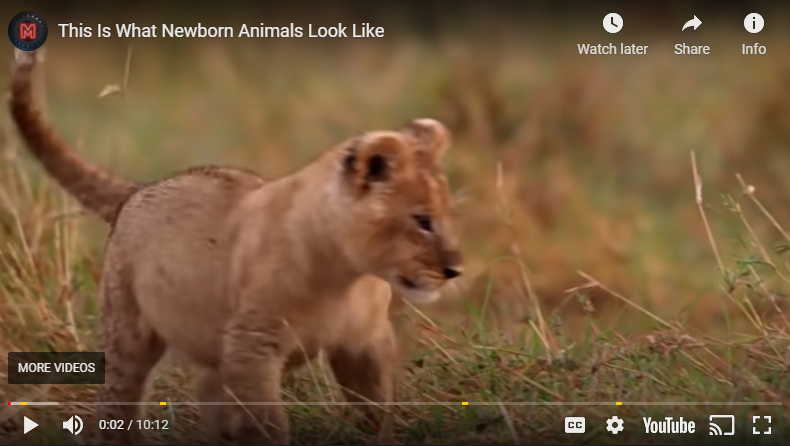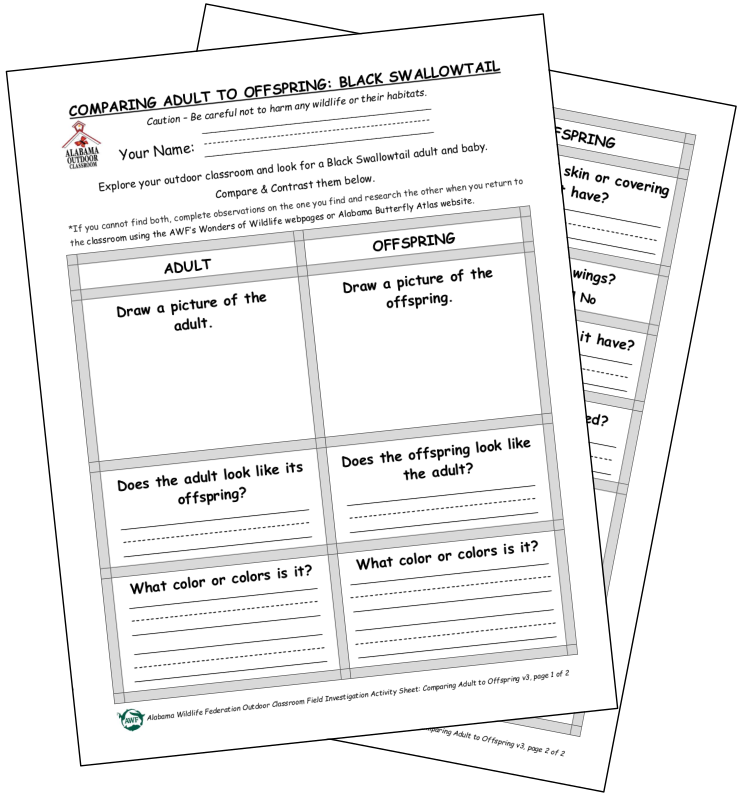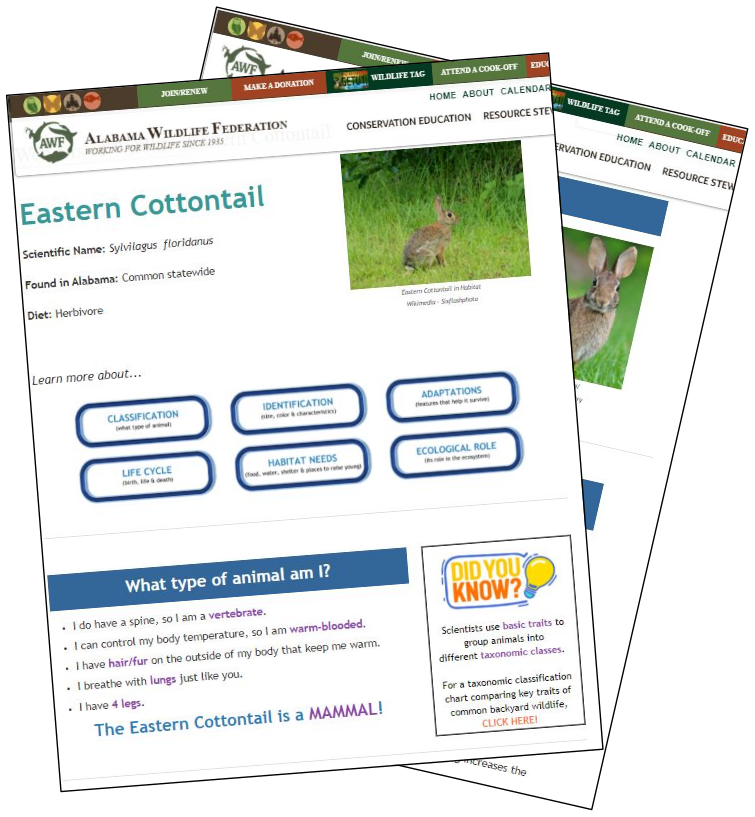Field Investigation: Comparing Adult to Offspring
Students compare and contrast the adult and offspring of a butterfly species, and then they explore the outdoor classroom to find and observe it, identify it, determine if it is an adult or offspring.
Questions? Contact us at oc@alabamawildlife.org. .
| Click on the orange links to access free educational materials: Lesson Plans | ALSDE Standards Taught |
|
| Activity Page #1: Monarch Adult & Offspring (or as Word Doc) Activity Page #2: Black Swallowtail Adult & Offspring (or as Word Doc) with Answer Page #2 |
|
| Outdoor Activity Materials: activity pages, clipboards, pencils, magnifying glasses, and copies of field identification guides such as National Audubon Society Field Guide to the Southeastern States |
|
Step 1: Engage through Discussion
|
|
| Engage the students and capture their interests with an Interactive Q&A (or as PDF) that allows you to click through the questions one at a time. You can gauge your students' understanding of the topic as they answer the questions. Print and use the Q&A Info Sheet (or as Word Doc) to anticipate the next question in the Interactive Q&A and to guide the conversation with the students. (Note: For the PowerPoint (PPT), click "Slide Show" & "From Beginning" to display the questions and answers separately.) | |
Use these tools to continue the discussion:
|
|
| Step 2: Explore with Literature | ||
| As you read these books, you can further explore the topic and discuss your students' experiences and knowledge around the topic: Monarch Butterfly by Gail Gibbons (ISBN-10:0823409090) Read Aloud by Mary Ellen Ariotti on YouTube (13 min) From Caterpillar to Butterfly (Let's-Read-and-Find-Out-Science 1) by Deborah Heiligman (ISBN-978-0062381835) Read Aloud by Mary Ellen Ariotti on YouTube (8 min) From Tadpole to Frog (Let's-Read-and-Find-Out-Science 1) by Wendy Pfeffer (ISBN-978-0062381866) |
 |
|
 |
||
| Step 3: Explain with Educational Videos | |
| Use these educational videos to help explain the topic in more detail: | |
| This is What Newborn Animals Look Like by Mind Warehouse (2:56 min.) @ https://www.youtube.com/watch? |
Baby Animals Who Grow Up to Look Totally Different (2:18 min.) @ https://www.youtube.com/watch?v=-0TkOoakcP0 |
| Step 4: Elaborate with a Field Investigation in the Outdoor Classroom | |
| Students apply what they have learned as they investigate the topic in your outdoor classroom and record their real-world observations on their activity page: | |
| Version #1: Monarch Butterfly |
Version #2: Black Swallowtail Butterfly |
Activity Tips
Version #1 - Comparing Adult to Offspring: Monarch Butterfly Activity Page: PDF (as is) / Word Doc (editable) Procedure Indoor Discussion:
|
|
Version #2 - Comparing Adult to Offspring: Black Swallowtail Activity Page: PDF (as is) / Word Doc (editable) Procedure Indoor Discussion:
|
|
Wildlife Identification Resources:
|
|
| Step 5: Evaluate with an Assessment Activity | ||
| Review and assess the students’ observations and answers on their observation pages: | ||
| Evaluate the students' understanding of the topic with the following assessment tool: | ||
|
||
Questions? Contact us at oc@alabamawildlife.org. .
 Wildlife Tag
Wildlife Tag
